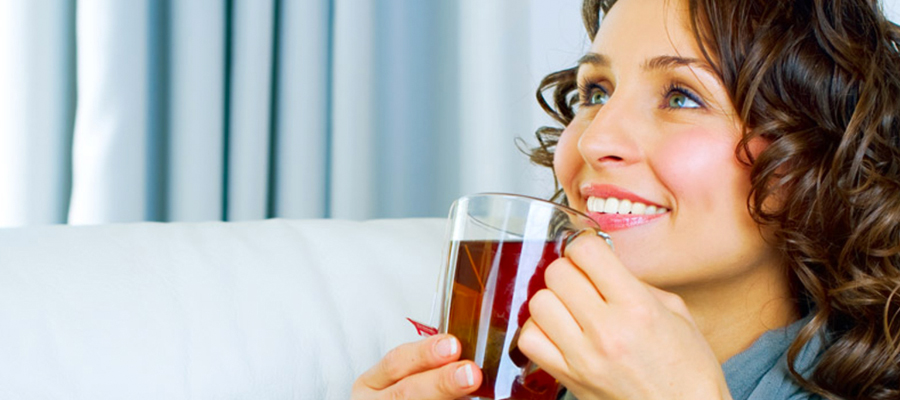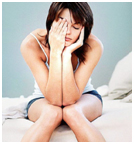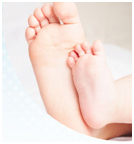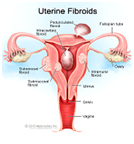|
|
+91 8469279141 hemrajhomeoclinic@yahoo.com
|
|
|

|
|
|
gynaecological treatment (ambawadi ahmedabad)
|

|
The women age of adolescence is a very delicate time in a girl’s life. The body has to
get used to lots of physical & mental changes & it is the transition of a young
girl into a women care of the future. A smooth sailing through these years ensures that
the woman emerges into a confident future of tomorrow. Hence it becomes very important
that this time is free of any pain or discomfort of any sorts. One of the major
complaints young girls face is of menstrual cramps or in medical terminology Dysmennorhea.
Let us know something more about this common ailment for Women care in ahmedabad.
|
|
What are Menstrual Cramps for women?
|
|
• Menstrual cramps are pains in the belly and pelvic areas that are experienced
by a woman as a result of her menstrual period.
|
|
• Menstrual cramps are not the same as the discomfort felt during Premenstrual syndrome
(PMS), although the symptoms of both disorders can sometimes be experienced as a
continual process. Many women suffer from both PMS and menstrual cramps.
|
|
• Menstrual cramps can range from mild to quite severe. Mild menstrual cramps may
be barely noticeable and of short duration sometimes felt just as a sense of light
heaviness in the belly. Severe menstrual cramps can be so painful that they interfere
with a woman’s regular activities for several days.
|
|
• Menstrual cramps of some degree affect more than an estimated 50% of women, and
among these, up to 15% would describe their menstrual cramps as severe.
|
|
• Surveys of show that over 90% of girls report having menstrual cramps.
|
|
• The medical term for menstrual cramps is dysmenorrhea. There are two types of
dysmenorrhea, primary and secondary.
|
|
• In primary dysmenorrhea, there is no underlying gynecologic problem causing the
pain. This type of cramping may begin within six months to a year following menarche
(the beginning of menstruation).
|
|
• In secondary dysmenorrhea, some underlying abnormal condition (usually involving
a woman’s reproductive system) contributes to the menstrual pain. Secondary dysmenorrhea
may be evident at menarche but, more often, the condition develops later.
|
|
Causes of Menstrual Cramps(Women care)
|
|
Each month, the inner lining of the uterus normally builds up in preparation for
a possible pregnancy. After ovulation, if the egg is not fertilized by a sperm,
no pregnancy will result and the current lining of the uterus is no longer needed.
The woman’s estrogen and progesterone hormone levels decline, and the lining of
the uterus becomes swollen and is eventually shed as the menstrual flow and is replaced
by a new lining in the next monthly cycle.
|
|
When the old uterine lining begins to break down, molecular compounds called prostaglandins
are released. These compounds cause the muscles of the uterus to contract. When
the uterine muscles contract, they constrict the blood supply (vasoconstriction)
to the endometrium. This contraction blocks the delivery of oxygen to the tissue
of the endometrium which, in turn, breaks down and dies. After the death of this
tissue, the uterine contractions literally squeeze the old endometrial tissue through
the cervix and out of the body by way of the vagina.
|
|
Menstrual cramps are caused by these uterine contractions that occur in response
to prostaglandins and other chemicals. The cramping sensation is intensified when
clots or pieces of bloody tissue from the lining of the uterus pass through the
cervix, especially if a woman’s cervical canal is narrow.
|
|
The difference between menstrual cramps that are more painful and those that are
less painful may be related to a woman’s prostaglandin levels. Women with menstrual
cramps have elevated levels of prostaglandins in the endometrium (uterine lining)
when compared with women who do not experience cramps. Menstrual cramps are very
similar to those a pregnant woman experiences when she is given prostaglandin as
a medication to induce labor.
|
|
Other Factors Influencing Menstrual Cramps(Women care)
|
|
• As mentioned above, an unusually narrow cervical canal tends to increase menstrual
cramps.
|
|
• Another anatomical factor thought to contribute to menstrual cramps is a backwards
tilting of the uterus (a retroverted uterus).
|
|
• Lack of exercise is now recognized to contribute to painful menstrual cramps.
|
|
• It has long been thought that psychological factors also play a role. For example,
it is widely accepted that emotional stress can increase the discomfort of menstrual
cramps.
|
|
Other Factors Influencing Menstrual Cramps(Women care)
|
|
• Menstrual cramps have pains that begin in the lower abdomen and pelvis. The discomfort
can extend to the lower back or legs. The cramps can be a quite painful or simply
a dull ache. They can be periodic or continual.
|
|
• Menstrual cramps usually start shortly before the menstrual period, peak within
24 hours after the onset of the bleeding, and subside again after a day or two.
|
|
• Menstrual cramps may be accompanied with headache and/or nausea, which can lead,
although infrequently, to the point of vomiting.
|
|
• Menstrual cramps can also be accompanied by either constipation or diarrhea because
the prostaglandins which cause smooth muscles to contract are found in both the
uterus and intestinal tract.
|
|
• Some women experience an urge to urinate more frequently.
|
|
Homeopathic Help for Dysmennorhea
|
|
As we know that homeopathy takes into consideration the whole person & not just
their complaints. Our medicines are of great help in menstrual cramps in all age
group of women & we also take a note of their life style, their profession, regular
routine habits & if there is any underlying cause in severe cases.
|
|
Excellent remedies like Caulophyllum & Cimicifuga act on the uterine muscles & give
relief to the woman.
|
|
Mental irritability, anger & mood swings along with severe cramps is well covered
by Chamomilla & Pulsatilla. Frequent doses of Magnesium phos act as muscle relaxant
& gives relief from the pain.
|
|
As homeopathy is safe from all angles it can be given to young girls & they are
saved from taking strong painkillers which may cause other side effects.
|

|
Every young girl dreams of a beautiful time during her prime adolescent years when
she is growing from a child into a young woman. She welcomes the changes in her
body with open mind and heart, knowing very well that this journey will take her
to a different level in the future where she will stand as the woman with confidence
and conviction. But alas! This dream for many becomes a long road trip with ups
and downs. Irregular menstrual cycles, acne and abnormal hair growth, unnatural
weight gains are few changes which are not welcomed by women. One major cause leading
to such disturbances is Polycystic Ovarian Syndrome OR Polycystic Ovarian Disease
(PCOS/PCOD).
|
|
Every young girl dreams of a beautiful time during her prime adolescent years when
she is growing from a child into a young woman. She welcomes the changes in her
body with open mind and heart, knowing very well that this journey will take her
to a different level in the future where she will stand as the woman with confidence
and conviction. But alas! This dream for many becomes a long road trip with ups
and downs. Irregular menstrual cycles, acne and abnormal hair growth, unnatural
weight gains are few changes which are not welcomed by women. One major cause leading
to such disturbances is Polycystic Ovarian Syndrome OR Polycystic Ovarian Disease
(PCOS/PCOD).
|
|
Polycystic ovarian syndrome (PCOS), also known by the name Stein-Leventhal syndrome,
is a hormonal problem that causes women to have a variety of symptoms. As the name
indicates it is a condition in which the ovaries have multiple cysts like growths
and the women presents with a characteristic group of symptoms. Symptoms of PCOS
begin in adolescence but it many cases it is diagnosed much later in life.
|
|
Causes of PCOS / PCOD
|
|
• Genetics seem to be one of the major factor in this condition and it is commonly
observed that the patient’s mother or sister’s have the similar disposition.
|
|
• Hormonal imbalances is the major cause for the disturbances as it is noticed that
women may have multiple cysts but do not fall into the category of PCOS since they
do not present with the typical symptoms.
|
|
• Another hormonal abnormality in women with PCOS is excessive production of the
hormone LH, which is involved in stimulating the ovaries and formation of cysts.
|
|
• A possible contributing factor in the development of PCOS includes a low level
of chronic inflammation in the body and fetal exposure to male hormones.
|
|
Symptoms of PCOS / PCOD
|
|
• The principal signs and symptoms of PCOS are related to menstrual disturbances
and elevated levels of male hormones (androgens).
|
|
• Menstrual disturbances can include delay of normal menstruation (primary amenorrhea),
the presence of fewer than normal menstrual periods (oligomenorrhea), or the absence
of menstruation for more than three months (secondary amenorrhea).
|
|
• Symptoms related to elevated androgen levels include acne, excess hair growth
on the body (hirsutism), and male-pattern hair loss.
|
|
• Women who have PCOS do not regularly ovulate; that is, they do not release an
egg every month. This is why they do not have regular periods and typically have
difficulty in conceiving and sterility.
|
|
• Other symptoms which are associated with PCOS and related to hormonal imbalance
are –
|
|
1. Obesity and weight gain mostly centered around lower torso (apple shape)
|
|
2. Elevated insulin levels
|
|
3. Oily skin and Dandruff
|
|
4. Skin discolorations or pigmentations
|
|
5. In some cases elevated blood pressure and cholesterol.
|
|
Along with the above symptoms an ultrasound of the ovaries would confirm the diagnosis
of polycystic ovaries.
|
|
Homeopathic treatment for PCOS / PCOD
|
|
• Managing PCOS with Homeopathy involves the deep acting, constitutional remedies
which work on the patient’s entire endocrinal system and correcting the Hormonal
imbalance.
|
|
• It is this approach and concept of Homeopathy which helps in correcting the pathology
associated with PCOS.
|
|
• The genetic predispositions, physical symptoms, symptoms related to the menstrual
cycle are taken into consideration to prescribe the exacting remedy.
|
|
• Specific medicines like Apis and Iodum are prescribed for cystic ovaries and they
also help in regularizing the periodical cycles.
|
|
• Polycrest medicines like Lachesis and Thuja alter the genetic blocks and used
as constitutional drugs.
|
|
• Experience of the Homeopathic doctors enables them to exactly come to the right
remedy and control the condition to a great extent.
|
|
• Patient on Homeopathy is relieved from taking the hormonal drugs and its side
effects over a period of time.
|

|
Any growth in the body is the matter of immediate concern to the individual and
is often associated with the deadliest of all conditions-cancer!!
Well that may not always be the case every time. An extra growth is the indication
that somewhere some cells are behaving abnormally and they need to be corrected
immediately.
|
|
Women are blessed with the gift of procreation, on them rest the future of the next
generation hence anxiety about their well being is prime in their family. Let’s
deal with an often heard condition which many women suffer from in the present times
i.e. Uterine Fibroids.
|
|
Uterine fibroids are benign tumors that originate in the uterus (womb) and are composed
of the same smooth muscle fibers as the uterine wall (myometrium), though at times
they are denser than normal myometrium. Uterine fibroids are usually round or semi-round
in shape and are described based upon their location within the uterus as: Subserosal
Fibroids – Beneath the lining on the outer side of the uterus. Submucosal Fibroids
– Inside the uterine cavity beneath the lining of uterus. Intramural Fibroids –
located within the muscular wall of the uterus.
|
|
Causes of Uterine Fibroids
|
|
Though we cannot ascertain the exact cause of these growths the following factors
do play a major role in their occurrence –
|
|
• Family history is a key factor, since there is often a history of fibroids developing
in women of the same family.
|
|
• Genetic abnormalities.
|
|
• Alterations in growth factor i.e. the proteins formed in the body that direct
the rate and extent of cell proliferation can undergo some changes.
|
|
• Abnormalities in the vascular (blood vessel) system.
|
|
• Tissue response to injury like in repeated uterine infections.
|
|
Symptoms of Uterine Fibroids
|
|
Many women with uterine fibroids have no symptoms till a much later stage. However
the following complaints are commonly associated with fibroids –
|
|
• Abnormal uterine bleeding is seen especially if the fibroids are near the uterine
lining or interfere with the blood flow to the lining.
|
|
• Women experience heavy, long-lasting and painful periods.
|
|
• Large fibroids cause pelvic pain, pressure on bladder with frequent or obstructed
urination and pressure on rectum with pain during defecation.
|
|
• Submucosal fibroids cause deformation of the uterine lining and cause infertility
or sterility.
|
|
• Excessive bloating sensation and abdominal lump is noticed in large fibroids.
|
|
Mostly the fibroids are discovered by ultra sonography of the pelvis and they
are not a major threat to the woman but one must watch for them if there is an abnormal
increase in the size over a short period of time as that maybe cancerous. Other
complications which can occur are –
|
|
• Severe anemia due to heavy bleeding.
|
|
• Interference with growth of fetus during pregnancy and problem during delivery.
|
|
• Infections along with bleeding.
|
|
Homeopathy for Uterine Fibroids
|
|
The most common solution which is offered by the doctors for fibroids is surgery
which on the other hand leads to more problems like surgically induced menopause
and abrupt onset of symptoms like hot flashes, mood swings, loss of libido, weight
gain, malaise or tiredness, osteoporosis and sometimes acne and unwanted hair growth.
The other option they give is Hormone therapy which also produces similar effects
as above.
|
|
• Homeopathy on the other hand offers a way out without any such side effects. These
remedies are especially beneficial if the treatment is started before the tumors
become very large.
|
|
• These medications control further growth of the fibroids and gradually reduce
the size of the existing ones.
|
|
• Symptoms like abnormal bleedings and menstrual cycles, anemia, urinary problems
can also be taken care of by homeopathy.
|
|
• Ustilago and Trillium are two such indicated medicines for bleeding disorders
related to fibroids.
|
|
• Aurum metallicum is the medicine especially suited to large fibroids.
|
|
• Deep acting constitutional remedies like Thuja and Calcarea flour are given to
patient to reduce the tendency to form the fibroids and control the existing ones.
|
|
• Proper and complete course of homeopathy taken from an experienced homeopath will
save the woman from the knife and all the complications arising from it thereafter.
|
|
In our lifetime we surely come across lots of occasions when we need to take a break
& think about whether we are treating our body well. A healthy mind & a healthy
body give us the feeling of well being. Even slightest disturbance in our day to
day routine causes us to become unsettled & apprehensive. A very commonly heard
expression of discomfort we often hear is Urinary Infection. This actually indicates
an infection of the Urinary Tract which includes the kidneys, the ureters & the
urinary bladder.
|
|
A UTI as it is commonly referred to is an infection in the urinary tract. Infections
are caused by microbes—organisms too small to be seen without a microscope—including
fungi, viruses, and bacteria. An infection in the urethra is called urethritis.
A bladder infection is called cystitis. Bacteria may travel up the ureters to multiply
and infect the kidneys. A kidney infection is called pyelonephritis.
|
|
Causes of Urinary Tract Infections
|
|
• Normally, bacteria that enter the urinary tract are rapidly removed by the body
before they cause symptoms. However, sometimes bacteria overcome the body’s natural
defenses and cause infection.
|
|
• Most UTIs are caused by bacteria that live in the bowel. The bacterium Escherichia
coli (E. coli) cause vast majority of UTIs.
|
|
• UTI’s occur more in females than males the risk factors being their anatomical
structure & childbirth. In young sexually active women, sexual activity is the cause
of 75–90% of bladder infections, with the risk of infection related to the frequency
of sex.
|
|
• Infection occurs easily form public toilets and urinals too especially when the
person is already in a phase where he or she is susceptible to infections & their
immune system is compromised.
|
|
• Persons suffering from conditions requiring frequent catheterization are also
more susceptible to repeated infections.
|
|
• A pre-dispositon of bladder infections sometimes run in the family & diabetics
are also at a high risk of getting the infection.
|
|
Homeopathic treatment of UTI
|
|
• Homeopathic remedies are a much quicker & safer alternative than strong antibiotics
for immediate relief in urine infections.
|
|
• Often a patient enters the clinic with severe symptoms & proper dosage with frequent
repetitions can relieve them from the agony within a short time.
|
|
• Arsenic alb, Cantharis, Apis are few of the well indicate remedies which are often
administered for UTI’s & have proven to be highly suitable as well as beneficial
for the patients if given under the guidance of an experienced homeopath.
|
|
• Certain polycrest medicines remove the tendencies in a patient to get repeated
infections if prescribed after complete case taking & repertorization of the case.
|
|
Self Care Measures
|
|
• Drinking plenty of water helps in removing the toxins from the body.
|
|
• Taking fluids like cranberry juice & coconut water is also highly beneficial.
|
|
• Taking care of personal hygiene.
|
|
• Avoiding dirty public urinals & toilets.
|
|
• Making sure that natural urge to empty the bladder is taken care of in good time
& not resisted.
|
|
Menopause is one of the most critical phase of a women where she might get trouble
. Homeopathy have effective treatment for menopausal complains.
|
What is menopause?
Menopause, also known as the climacteric, is the time in most women’s lives when
menstualperiod stop permanently, Menopause typically occurs between 45 and 55 yrs
of age. It may also be defined by a decrease ovarian function by decreasing hormons.
|
|
Sign And Symptoms
|
• Genetics seem to be one of the major factor in this condition and it is commonly
observed that the patient’s mother or sister’s have the similar disposition.
• fore menopause, a woman’s periods typically become irregular, which means that
periods may be longer or shorter in duration, or be lighter or heavier in terms
of the amount of flow.
• Hot flashes
• Vaginal dryness
• Breast engorgment with breast pain
• Lack of energy
• Joint stifness, backpain
• Night sweat
• Headache
• Urinary incontinence
• Skin : dryness ,itching ,flashes,
• Psycological disturbance like
• Anxiety
• Poor memory
• Mood swings
• Irritability
• Interest in sexual activity gone down
• Depressive
|
|
Risk
|
Menopause Confers:
• Increase risk of atherosclerosis
• Increase risk of osteoporosis and osteopenia
• Risk of acute myocardial infarction
|
|
|
|
|
|
|
|
|
© 2018 | HEMRAJ HOMEO CLINIC | All Rights Reserved. Design By Business7days.
|
|
|
|
